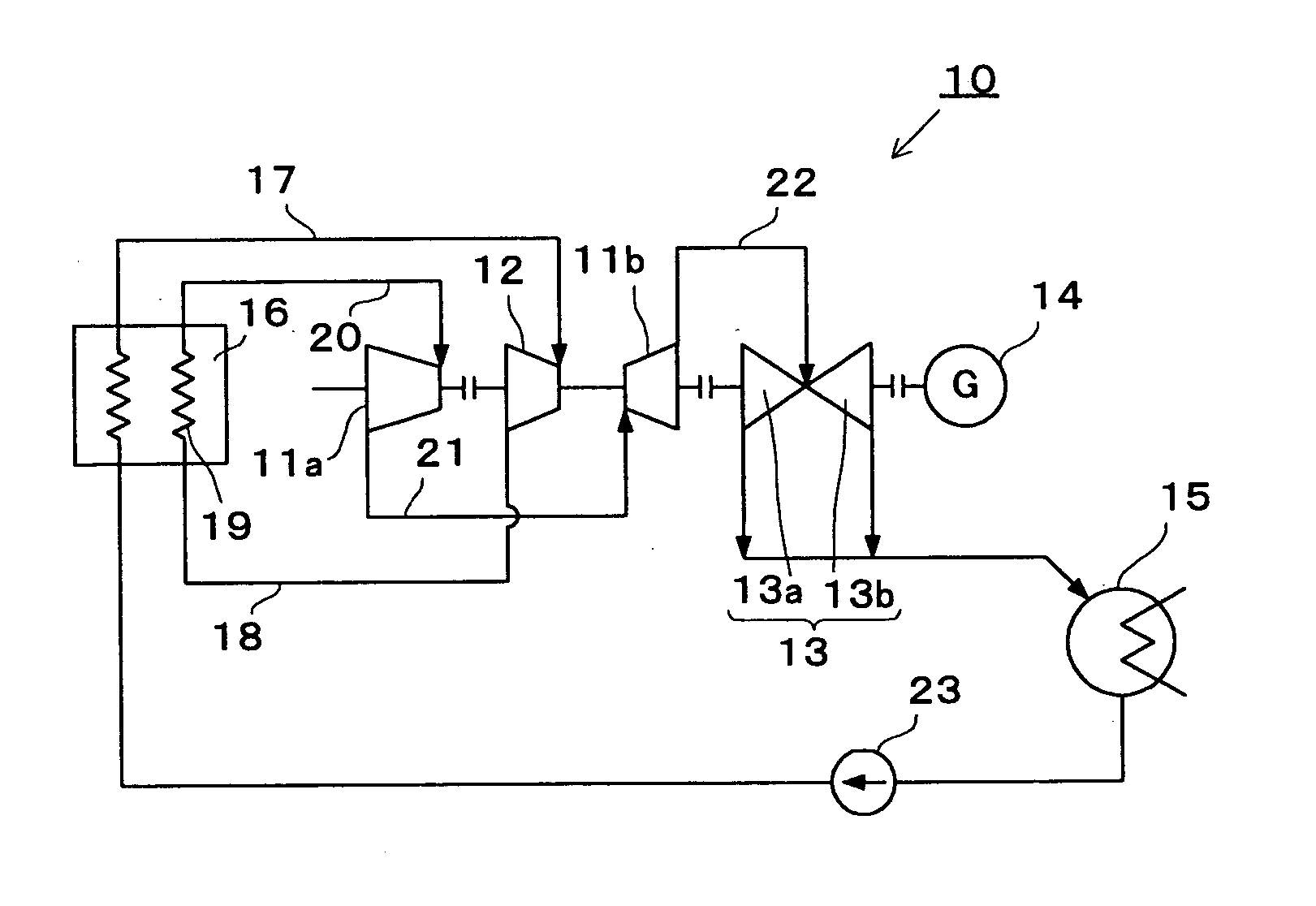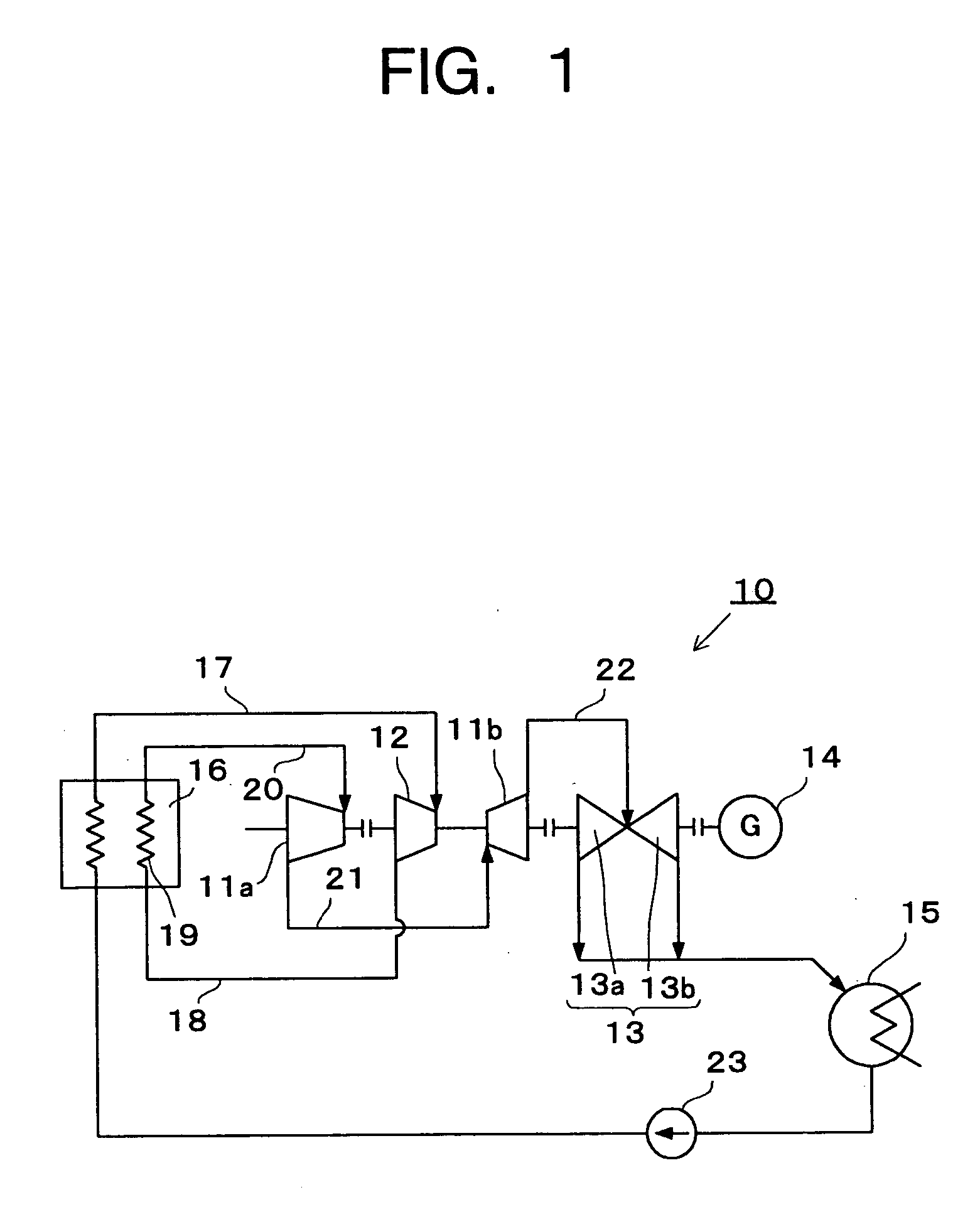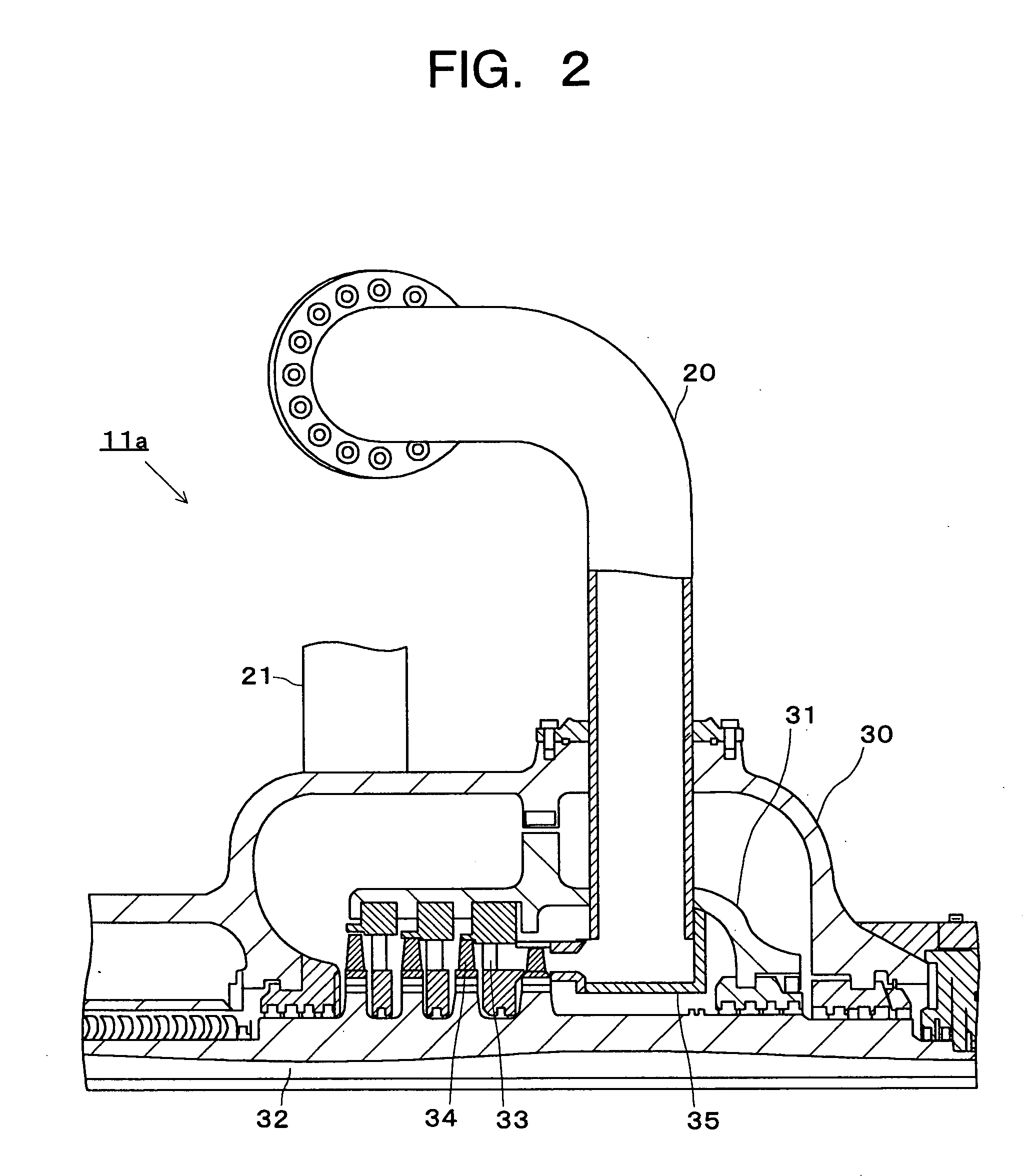Steam turbine power plant
a steam turbine and power plant technology, applied in steam engine plants, wind motors with perpendicular air flow, machines/engines, etc., can solve the problems of increasing facility costs, increasing facility costs, and thermal stress, so as to improve thermal efficiency and ensure economic efficiency.
- Summary
- Abstract
- Description
- Claims
- Application Information
AI Technical Summary
Benefits of technology
Problems solved by technology
Method used
Image
Examples
first embodiment
A steam turbine power plant 10 according to the first embodiment of the present invention will be described with reference to FIG. 1. FIG. 1 shows an overview of the structure of the steam turbine power plant 10.
The steam turbine power plant 10 has the intermediate-pressure turbine separated into a high-temperature, high-pressure side high-temperature, intermediate-pressure turbine section 11a and a low-temperature, low-pressure side low-temperature, intermediate-pressure turbine section 11b. This steam turbine power plant 10 is mainly comprised of a high-pressure turbine 12 and the low-temperature, intermediate-pressure turbine section 11b which are disposed within the same casing, the high-temperature, intermediate-pressure turbine section 11a, a low-pressure turbine 13, a generator 14, a condenser 15, and a boiler 16. The high-temperature, intermediate-pressure turbine section 11a into which high-temperature steam having a temperature of 650° C. or more is introduced is formed...
second embodiment
A steam turbine power plant 40 according to a second embodiment of the invention will be described with reference to FIG. 3. FIG. 3 shows an overview of the structure of the steam turbine power plant 40.
The steam turbine power plant 40 is configured without having the intermediate-pressure turbine separated, and the steam turbine power plant 40 is mainly comprised of a high-pressure turbine 41, an intermediate-pressure turbine 42, a low-pressure turbine 43, a generator 44, a condenser 45 and a boiler 46. The intermediate-pressure turbine 42 into which high-temperature steam having a temperature of 650° C. or more is introduced is configured of austenitic heat-resistant steels or Ni-based alloys.
Subsequently, a work of steam in the steam turbine power plant 40 will be described.
Steam, which is heated to a temperature lower than 650° C., for example, 630° C., by and flows out of the boiler 46, flows through a main steam pipe 47 to enter the high-pressure turbine 41 at a pressur...
third embodiment
The steam turbine power plant according to a third embodiment of this invention will be described with reference to FIG. 5. The steam turbine power plant according to the third embodiment of the invention has the same structure as that of the steam turbine power plant 10 of the first embodiment except that a structure for cooling individual components is added to the high-temperature, intermediate-pressure turbine section 11a of the first embodiment.
FIG. 5 shows a sectional view of the upper half casing section of a high-temperature, intermediate-pressure turbine section 70 having a structure for mainly cooling the rotor 32 and the outer casing 30. The same reference numerals are allotted to the same elements as those of the high-temperature, intermediate-pressure turbine section 11a of the first embodiment, and their overlapped descriptions are omitted.
The high-temperature, intermediate-pressure turbine section 70 is provided with a cooling steam pipe 71 comprising a cooling st...
PUM
| Property | Measurement | Unit |
|---|---|---|
| temperature | aaaaa | aaaaa |
| temperatures | aaaaa | aaaaa |
| temperature | aaaaa | aaaaa |
Abstract
Description
Claims
Application Information
 Login to View More
Login to View More - R&D
- Intellectual Property
- Life Sciences
- Materials
- Tech Scout
- Unparalleled Data Quality
- Higher Quality Content
- 60% Fewer Hallucinations
Browse by: Latest US Patents, China's latest patents, Technical Efficacy Thesaurus, Application Domain, Technology Topic, Popular Technical Reports.
© 2025 PatSnap. All rights reserved.Legal|Privacy policy|Modern Slavery Act Transparency Statement|Sitemap|About US| Contact US: help@patsnap.com



